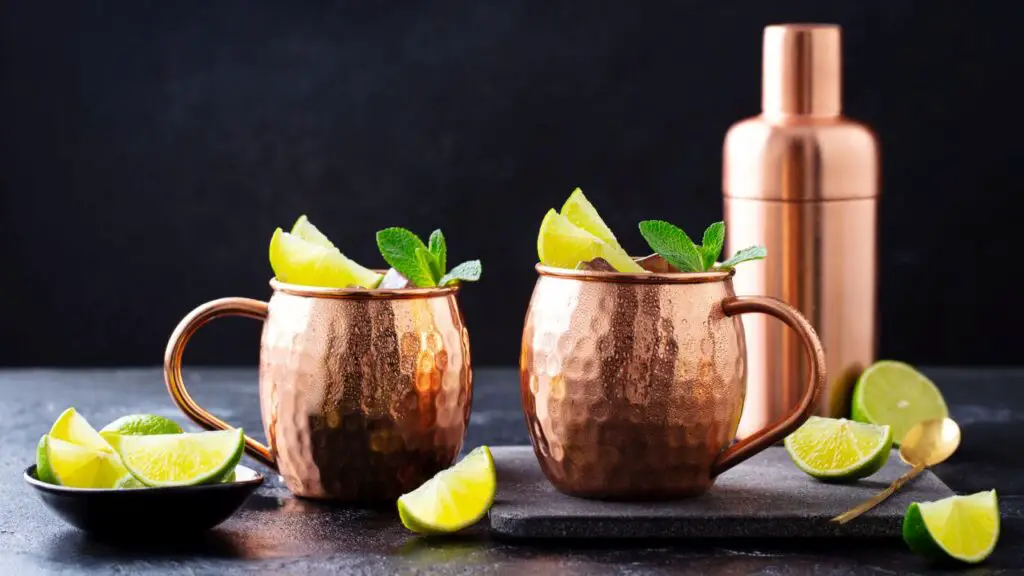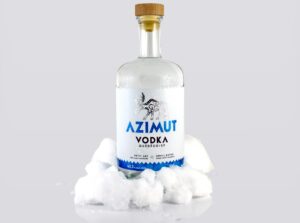A Moscow Mule and a Russian Mule are both popular cocktails that have a similar base but are distinct in their own right. The confusion between the two arises mainly due to their names and the common ingredient of vodka. However, the primary difference lies in the additional ingredients and the presentation of these drinks. Here’s a breakdown of what sets these two cocktails apart:
Origin and History
Moscow Mule: The Moscow Mule is a cocktail that was invented in the United States in the 1940s. It is often credited to John G. Martin, a spirits and food distributor, and Jack Morgan, the owner of the Cock ‘n’ Bull Tavern in Los Angeles. The drink was created as a way to sell more vodka, a spirit that was not very popular in the US at the time. Its name, “Moscow,” references vodka’s association with Russia, while “Mule” is thought to describe the kick provided by the ginger beer.
Russian Mule: The term “Russian Mule” is less commonly used and can sometimes be considered a variation of the Moscow Mule or simply another name for it, depending on the context. However, when it is distinguished as a separate drink, it generally refers to a simpler version of the Moscow Mule, focusing on the Russian origin of the vodka used in the cocktail.
Ingredients and Preparation
Moscow Mule:
Vodka
Ginger beer
Lime juice
Often garnished with a lime wedge and served in a copper mug, which is iconic to the Moscow Mule. The copper mug is said to enhance the flavor of the drink and keep it colder.
Russian Mule:
When distinguished from the Moscow Mule, a Russian Mule might use a specifically Russian brand of vodka.
Ginger beer
The use of lime juice can vary, and it might include other ingredients or garnishes that are not typically found in a Moscow Mule.

Taste and Presentation
Moscow Mule: The combination of vodka, spicy ginger beer, and the citrusy tang of lime juice gives the Moscow Mule a refreshing, spicy, and slightly sweet flavor profile. The copper mug not only makes the drink visually distinctive but also adds to the experience by keeping the drink cold and adding a slight metallic tang.
Russian Mule: Depending on the specific variation, a Russian Mule may taste very similar to a Moscow Mule if it sticks closely to the original ingredients. If additional ingredients are added or if the lime juice is omitted, this can alter the taste significantly. The presentation of a Russian Mule may not necessarily include a copper mug.
While the names Moscow Mule and Russian Mule suggest a geographical distinction, the primary difference often comes down to the specific recipe used and the presentation of the drink. The Moscow Mule, with its iconic copper mug and specific recipe, is a well-defined cocktail that has gained popularity worldwide. A Russian Mule, when differentiated, might emphasize the use of Russian vodka or vary slightly in ingredients but is less commonly recognized as a distinct cocktail from the Moscow Mule. Ultimately, both drinks celebrate the versatility of vodka and the creativity of cocktail culture.
Cultural Impact and Variations
Beyond the basic differences in ingredients and presentation, the Moscow Mule has made a significant cultural impact since its creation, contributing to the popularization of vodka in the United States and becoming a staple in the American cocktail scene. Its success has led to the creation of numerous variations, such as the Kentucky Mule (with bourbon instead of vodka), the Mexican Mule (with tequila), and others, each substituting the base spirit but maintaining the essential components of ginger beer and lime juice.
The Russian Mule, by contrast, has not achieved the same level of cultural significance or popularity. When it is recognized as a distinct cocktail, it might be seen as a nod to the authenticity or purity of using Russian vodka, perhaps appealing to purists or those seeking to connect more directly with the spirit’s cultural origins.
Personal Preferences and Experimentation
The choice between a Moscow Mule and a Russian Mule—if the latter is considered a separate entity—often comes down to personal preference and the desire for experimentation. Cocktail enthusiasts might be inclined to try different brands of vodka, including those from Russia, to explore how these variations affect the overall taste of the drink. Similarly, the choice of ginger beer can greatly influence the cocktail’s spiciness and sweetness levels, allowing for a wide range of taste experiences within the framework of what could be considered a Moscow or Russian Mule.

In the realm of cocktails, the distinction between a Moscow Mule and a Russian Mule is not always clear-cut. The Moscow Mule, with its specific combination of vodka, ginger beer, and lime juice served in a copper mug, has become a beloved classic for its refreshing taste and distinctive presentation. A Russian Mule, when differentiated, focuses more on the selection of vodka and may vary in its adherence to the traditional Moscow Mule recipe.
Ultimately, the exploration of these drinks is a testament to the creativity and versatility of cocktail making. Whether sticking to the classic Moscow Mule, experimenting with a Russian Mule, or trying one of the many variations inspired by the original, there’s a world of flavors and experiences to be discovered. The key lies in the quality of the ingredients, the balance of flavors, and the personal touch of the one who mixes the drink.
Frequently Asked Questions (FAQs) about Moscow Mule and Russian Mule
Can I use any ginger beer in a Moscow Mule or Russian Mule?
Yes, you can use any brand of ginger beer, but the choice will significantly affect the taste. Some ginger beers are spicier or sweeter than others. Experimenting with different brands can help you find your preferred balance of flavors.
Is it essential to serve a Moscow Mule in a copper mug?
While not essential, serving a Moscow Mule in a copper mug is traditional and adds to the aesthetic and experience of the drink. The copper mug is said to keep the drink colder and enhance its flavor profile. However, the drink will still be enjoyable if served in a different type of glass.
What makes a vodka Russian for the Russian Mule?
A vodka is considered Russian if it is produced in Russia, adhering to traditional Russian distillation and filtering processes. Russian vodkas are often made from wheat or rye and are known for their clarity, smoothness, and subtle flavors.
Can I make a non-alcoholic version of these drinks?
Absolutely! For a non-alcoholic version, you can substitute the vodka with a non-alcoholic spirit or simply increase the ginger beer and lime juice proportions. This variant is often called a “Ginger Lime Mule” or “Virgin Moscow Mule.”
What’s the best way to get the ‘kick’ in my Moscow or Russian Mule?
The ‘kick’ primarily comes from the ginger beer. For a stronger kick, look for ginger beers with a more pronounced spicy flavor. Adjusting the ratio of ginger beer to vodka can also help you control the strength of the kick.
Are there any specific limes I should use for the juice?
Any variety of fresh lime will work, but Persian limes (the most common variety found in grocery stores) are typically favored for their juice yield and balance of acidity and sweetness.
Key limes can also be used but are more acidic.
Can I add other ingredients to customize my Moscow Mule or Russian Mule?
Certainly! Many people enjoy adding ingredients like mint, cucumber, or different fruits (like berries or watermelon) to their Mule cocktails for a personalized touch. The base of the drink is quite versatile, so feel free to experiment.
Is there a specific ginger beer to vodka ratio I should follow?
A common starting point is a 2:1 ratio of ginger beer to vodka, but this can be adjusted based on personal preference. Some may prefer a stronger vodka presence, while others might like more ginger beer.
Can the Moscow Mule or Russian Mule be batched for parties?
Yes, both drinks can easily be batched for parties. Mix the vodka and lime juice in a large pitcher or container, then add ginger beer just before serving to maintain its fizz. Remember to adjust the quantities based on the number of guests.
How important is the quality of vodka in a Moscow Mule or Russian Mule?
The quality of vodka can make a difference, especially in a cocktail with relatively few ingredients. Higher quality vodka can provide a smoother finish and reduce the harshness sometimes associated with lower-quality spirits. However, because the ginger beer and lime juice are quite flavorful, they can help mask imperfections in the vodka.




